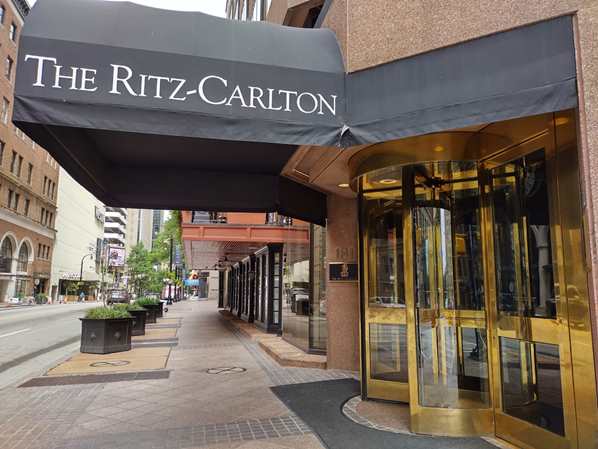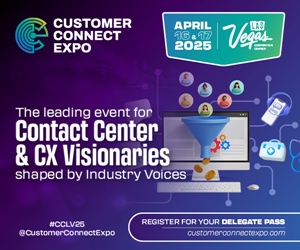
When a customer experiences a service failure, you’d assume their trust in the brand takes a hit. But what if the right response could not only fix the situation but actually make them more loyal than before?
That’s the concept behind the Customer Service Recovery Paradox. Brands that master this can turn slip-ups into opportunities to strengthen customer relationships, often resulting in higher satisfaction than if no issue had ever occurred.
In this article, we’ll explore real-world examples of companies that didn’t just bounce back from service failures—they came back stronger. You’ll see how thoughtful recovery strategies can rebuild trust, exceed expectations, and even create lasting loyalty.
Understanding the Customer Service Recovery Paradox
When things go wrong in business, it often feels like there’s no way to undo the damage. But here’s an interesting twist: if the problem is handled exceptionally well, customers might end up liking your brand even more than if the problem had never happened. This surprising phenomenon is called the Service Recovery Paradox, first introduced in 1992 by McCollough and Bharadwaj.
What is the Service Recovery Paradox?
The Service Recovery Paradox (SRP) flips conventional wisdom on its head. It suggests that when a customer experiences a service failure, but the company addresses it impressively, the customer’s satisfaction can actually surge. Not just back to baseline—but to a level higher than before the issue arose.
Imagine you order a pizza, and it shows up late and cold. Instead of just apologizing, the restaurant sends you a fresh pie, offers a discount on your next order, and follows up to ensure you’re happy. You’re now not only satisfied with your meal, but you might feel more loyal to the restaurant for how they handled it. This reaction, when managed well, is what underpins the SRP.
However, it’s important to note that the paradox isn’t a free pass for bad service. Customers must see the recovery effort as sincere, swift, and above their expectations. Without these elements, the paradox falls flat, and trust erodes.

Key Psychological Principles Behind the Paradox
Why does SRP work? The answer lies in psychology. Several key principles help us understand why a well-executed service recovery can leave customers more satisfied than an error-free experience ever would.
1. Expectation Disconfirmation Theory
According to this theory, customer satisfaction hinges on whether their expectations are met, exceeded, or fall short. In a service failure, expectations plummet. If your recovery shatters those lowered expectations, the customer feels a heightened sense of satisfaction. It’s like expecting a storm and suddenly getting sunshine instead.
2. Cognitive Dissonance
People dislike conflicting feelings. When a brand they trust fails them, it creates cognitive dissonance—a mental discomfort caused by inconsistency. A strong recovery effort resolves this internal conflict by reaffirming the customer’s belief in the brand, making them feel reassured and even more loyal. Learn more about how this psychological concept ties into SRP here.
3. Justice Theory
Fairness matters. Customers evaluate service recovery efforts based on distributive justice (did I get fair compensation?), procedural justice (was the process smooth?), and interactional justice (was I treated with respect?). When all three align, customers often reward the company with loyalty. In short, they’re not just satisfied—they’re rejuvenated.
4. Reciprocity
Humans are wired to reciprocate kindness. When a company goes above and beyond to fix a mistake, customers often feel compelled to “return the favor” by staying loyal. It’s a social contract we all instinctively follow, and brands can use this principle to turn a negative into a lasting positive.
These principles work together to explain why SRP isn’t just a theoretical concept but a proven way to win back customer trust.
When companies understand these underlying factors, they can move beyond damage control and start building stronger, more resilient customer relationships.

Frameworks for Effective Service Recovery
When customer service fails, it’s not just about fixing the mistake—it’s about repairing the trust that might have been broken. Smart brands rely on proven frameworks to guide their teams through service recovery, ensuring that responses are both efficient and empathetic. Let’s break down three effective methods used by leading companies.
Marriott’s LEARN Framework
The Marriott LEARN framework offers a step-by-step guide to managing customer dissatisfaction with professionalism and care. Here’s how it works:
- Listen: Start by actively listening to the customer’s concern without interrupting. This signals respect and helps the customer feel heard.
- Empathize: Show genuine understanding of how the issue has impacted them. A simple phrase like “I can see how frustrating this must be for you” can go a long way.
- Apologize: Acknowledge the mistake and offer a sincere apology. Avoid defensive language or shifting blame.
- React: Take immediate action to resolve the issue. Whether it’s offering a replacement, refund, or a goodwill gesture, the focus should be on exceeding expectations.
- Notify: Ensure proper follow-up by keeping customers updated on the resolution and informing relevant team members to avoid similar situations in the future.
Marriott’s dedication to this framework was highlighted in their approach toward handling booking errors or unexpected hotel service failures. The goal isn’t just to resolve the issue but to restore confidence in their brand.
Starbucks’ LATTE Method
Starbucks created the LATTE method as a way to standardize compassion in resolving customer complaints. It’s practical, easy to remember, and rooted in positive outcomes:
- Listen: Start with careful attention to the customer’s problem. This builds trust almost instantly.
- Acknowledge: Validate their feelings so they know their emotions are understood. For example, if a drink was wrong, saying, “I understand how disappointing that must be” helps repair the connection.
- Thank: Show appreciation for their patience and feedback. After all, no customer is obligated to give you a chance to fix things.
- Take action: Quickly resolve the issue. Whether it’s remaking a drink or offering a voucher, the action must align with the severity of the mistake.
- Explain: Take a moment to share why the issue happened (without overexplaining) and what you’ll do to prevent it next time.
This method ensures baristas across the globe are equipped to restore customer trust over something as small as a mistaken coffee order. Starbucks has publically demonstrated this method on many occasions, reinforcing their brand’s promise of “making things right.”
The MAMA Method
For more nuanced complaints, the MAMA method shines by promoting a well-rounded and tailored approach:
- Make time to listen: Frustrated customers want to feel like their issue is receiving attention. Allocate time to fully understand their problem without rushing.
- Acknowledge/Apologize: Recognize their feelings and take ownership of the mistake without hesitation.
- Meeting of Minds: Collaborate with the customer on a solution. Getting their input ensures the resolution aligns with their expectations.
- Act/Follow up: Implement the agreed solution immediately and check back to confirm the customer is satisfied with the outcome.
The MAMA method is particularly effective in situations where emotions are running high, making it a favorite for industries like hospitality and retail. Customers who feel actively involved in resolving their complaints are more likely to walk away as loyal advocates rather than critics.
Each of these frameworks serves as a reminder that how you handle complaints—no matter how small—can define whether customers leave with a grudge or newfound loyalty.

Real-World Examples of Brands Mastering Service Recovery
Turning a service failure into a loyalty-strengthening moment isn’t just theory—several brands have turned it into an art form. Below are examples of companies that have mastered service recovery, showcasing strategies that repair mistakes and leave customers feeling valued.
Ritz-Carlton: Empowering Employees for Immediate Recovery
The Ritz-Carlton remains a benchmark for stellar service recovery. The brand operates on the belief that front-line employees should have the authority to resolve customer issues on the spot. This philosophy is exemplified through their famous $2,000 Rule, empowering employees to spend up to $2,000 per guest to resolve a complaint or enhance their experience—no managerial approval needed.
For instance, imagine a guest discovers an issue with their room. Instead of relaying their concerns up the chain, the employee is equipped to act immediately. Whether that means arranging a surprise spa package or upgrading accommodations, the goal is to exceed expectations, not just meet them. Their approach goes beyond problem-solving; it’s about creating unforgettable moments.
Ritz-Carlton’s commitment to this proactive approach ensures problems are addressed swiftly, often transforming a dissatisfied customer into a brand evangelist.
Zappos: Building Trust Through Consistent Recovery
Zappos is legendary for its customer-centric philosophy, and their approach to service recovery is no exception. The online retailer prioritizes proactive communication and consistency when things go wrong. Their team is trained to listen carefully and then go above and beyond to fix the problem.
A great example involves a customer who ordered shoes for a wedding that didn’t arrive on time. Instead of apologies alone, Zappos overnighted a replacement pair at no extra charge and added a heartfelt note wishing them luck. Stories like these illustrate how Zappos handles failure: with care, urgency, and a touch of surprise.
Their ability to humanize interactions and foster trust has made them a standard of excellence in service recovery.
Airline Industry: Transparency and Communication in Service Failures
Flight delays and cancellations are among the most challenging customer service failures, and airlines often find themselves under scrutiny when disruptions occur. However, some airlines have set benchmarks in service recovery by focusing on transparency and open communication.
For example, when a delay happens, airlines like Alaska Airlines or American Airlines often notify passengers immediately via text or app updates, keeping them informed about the cause and estimated resolution time. Many now proactively offer meal vouchers, accommodation, or direct refunds for significant disruptions, minimizing frustration.
By addressing the root cause of frustration—uncertainty—and providing timely updates or compensation, airlines can transform a negative experience into a moment of regained trust. As highlighted in Service Recovery in the Airline Industry, clear communication can be the difference between losing customers or keeping them loyal.
Amazon: Automating Resolution for Faster Customer Satisfaction
Amazon has pioneered the use of automation in service recovery, making it quicker and easier to resolve minor customer issues. Their model is simple: let technology handle what it’s good at—speed and efficiency—while saving human interactions for more complex situations.
For instance, if a customer reports a damaged product, they can request a replacement or a refund through Amazon’s website without speaking to customer service. In many cases, refunds are issued immediately after authentication. This use of automation not only saves time for the customer but also prevents aggravation, as they don’t have to navigate lengthy processes.
This approach highlights Amazon’s ability to combine technology and customer care seamlessly, offering resolutions faster than most competitors.
By adopting these strategies, brands like Ritz-Carlton, Zappos, airlines, and Amazon prove that service recovery is not just damage control—it’s an opportunity to strengthen relationships and build unwavering loyalty.

Critical Factors for Achieving Service Recovery Success
When a service failure occurs, it’s not just the mistake that will stick with a customer—it’s how the business handles it. Successful service recovery doesn’t happen by accident. It’s the result of deliberate actions that focus on meeting customers’ needs, restoring trust, and exceeding expectations. Here are some essential factors to keep in mind when building a customer-centric recovery strategy.
Speed and Quality of Response
Addressing customer complaints quickly is more than just a courtesy—it’s a necessity. Delays only amplify customer frustrations, leading to a growing negative perception of your brand. When complaints are resolved swiftly, customers feel valued and assured that their concerns matter.
Speed alone, however, isn’t enough. The quality of the response plays an equally crucial role. Imagine having your complaint acknowledged quickly but then receiving a generic, half-hearted resolution—chances are, your satisfaction wouldn’t improve much. Customers expect businesses to act as problem-solvers, providing effective solutions tailored to the specific complaint.
Key Takeaways:
- Respond promptly to acknowledge the issue.
- Provide clear, actionable steps for resolution.
- Proactively follow up to confirm customer satisfaction.
A fast and thoughtful response not only addresses the immediate problem but also signals professionalism, paving the way for future loyalty.
Personalization in Recovery Efforts
One-size-fits-all solutions rarely leave customers impressed. People value 1feeling seen, heard, and understood—especially when they’re upset. Crafting recovery efforts around individual customer needs can transform a negative experience into a loyalty-building moment.
Personalization begins with empathy. Listen to understand the customer’s unique concerns and preferences. Then, tailor the resolution accordingly. For example, if a traveler missed their hotel check-in due to a flight delay, offering a complimentary late checkout or an upgraded room is far more meaningful than providing a generic apology email.
Simple Ways to Personalize Service Recovery:
- Use the customer’s name in communications for a more personal touch.
- Reference specific details about their experience during the resolution process.
- Offer solutions and compensations that align with their stated preferences.
Tailored recovery efforts show customers that your business doesn’t just care about fixing the mistake—it cares about them.
Measuring the Impact of Service Recovery
How do you know if your efforts to win back dissatisfied customers are actually working? Measuring the effectiveness of service recovery isn’t just a numbers game—it’s about understanding whether your efforts lead to real changes in customer behavior and perception. Let’s take a closer look at key metrics businesses can use to evaluate this impact.
Customer Lifetime Value (CLV)
Customer Lifetime Value (CLV) tells you how much revenue a customer is likely to bring to your business over the course of their relationship with you. When service failures are resolved effectively, CLV often increases. Why? Because recovering from mistakes not only restores trust but shows customers they’re valued. This can strengthen long-term loyalty.
When a customer has a bad experience, their CLV may drop sharply. But here’s the twist: an exceptional service recovery effort often turns a one-time buyer into a repeat customer. Think of it like repairing a crack in a dam—done right, the structure (i.e., the relationship) ends up stronger than before. For example, companies that handle issues with personalized solutions tend to see customers staying longer, spending more, and even advocating for the brand to others.
A great way to maximize CLV is by combining quick resolutions with meaningful gestures, such as discounts or loyalty program upgrades. The numbers don’t lie—one study revealed that 70% of customers who had complaints resolved promptly were willing to continue spending with the company.
Net Promoter Score (NPS) and Word-of-Mouth Referrals
Net Promoter Score (NPS) measures how likely a customer is to recommend your business to others. Service recovery has a direct impact on this metric. When you fix issues effectively, customers move from being detractors to promoters—boosting your overall score and, by extension, your reputation.
Imagine a scenario where a customer’s hotel reservation wasn’t honored due to a system glitch. The company not only fixes the problem but also offers an upgraded suite and a handwritten apology. What happens next? That customer tells their friends about how the issue was handled, influencing others to give the hotel a try. This ripple effect of word-of-mouth referrals is a byproduct of turning potentially negative experiences into standout moments.
By focusing on recovery excellence, brands can transform unhappy customers into advocates. According to experts, closing the loop with dissatisfied customers increases their likelihood of recommending your business.
Repurchase Rates and Retention Metrics
Repurchase rates measure how often customers return to buy from you again. After a service failure, you might assume customers will forego future purchases. But service recovery has the power to reverse this trend. Effective recovery can make it less about the problem and more about how you solved it.
For instance, a retailer might compensate a delayed shipment with free express delivery for the next order. Not only can this drive immediate repurchase, but it also shows the customer that their loyalty is valued. Similarly, retention metrics track how many customers stick around over time—another key indicator of whether your recovery efforts are working.
A customer who feels well-treated after an issue is eleven times more likely to stay loyal than one who doesn’t. And increased retention drives long-term profitability; gaining a new customer typically costs five times more than keeping an existing one.
By tracking CLV, NPS, and retention metrics, you can gain a complete picture of how your service recovery strategy is performing. These numbers don’t just reflect satisfaction—they reveal the loyalty and advocacy you build when you handle issues the right way.

Future Trends in Service Recovery Strategies
As businesses evolve, so do the expectations around how they handle mistakes. Service recovery is no longer just about addressing complaints—it’s about using cutting-edge tools and understanding shifting customer priorities to create loyalty. New technology, especially AI, and changing customer dynamics are spearheading innovations in this space.
Leveraging AI and Automation in Recovery Processes
AI is changing the game in service recovery. But why? It’s simple—automation enables better analysis, immediate responses, and solutions that stick.
For example, tools like chatbots integrated with AI can resolve basic customer problems in real-time—think missing delivery updates or refund requests. This reduces the wait and frustration often associated with troubleshooting. Behind the scenes, AI systems analyze customer feedback, detect patterns, and propose solutions that have been proven to work in similar cases.
AI isn’t just reactionary; it’s predictive too. Platforms can flag potential pain points before they escalate by monitoring customer interactions and service metrics. Have you noticed how Amazon often offers an immediate replacement when an item is marked damaged? That’s AI at work, aiming to minimize friction and wow customers with speed.
Moreover, automation takes care of repetitive, manual tasks. This frees up your team to focus on high-value, emotionally charged complaints where human empathy is critical.
The takeaway? AI and automation don’t replace human touch—they enhance it by ensuring smoother, faster resolutions while allowing employees to tackle the more nuanced, one-on-one cases.
Service Recovery: Stronger Connections
Mistakes happen, but how you respond defines your brand. Focus on empathy, speed, and a commitment to fair outcomes. The right recovery effort doesn’t just fix a problem—it fosters a stronger connection between your business and its customers.
How will your brand approach service recovery moving forward? It’s not just about solving issues; it’s about setting the stage for lasting loyalty.




